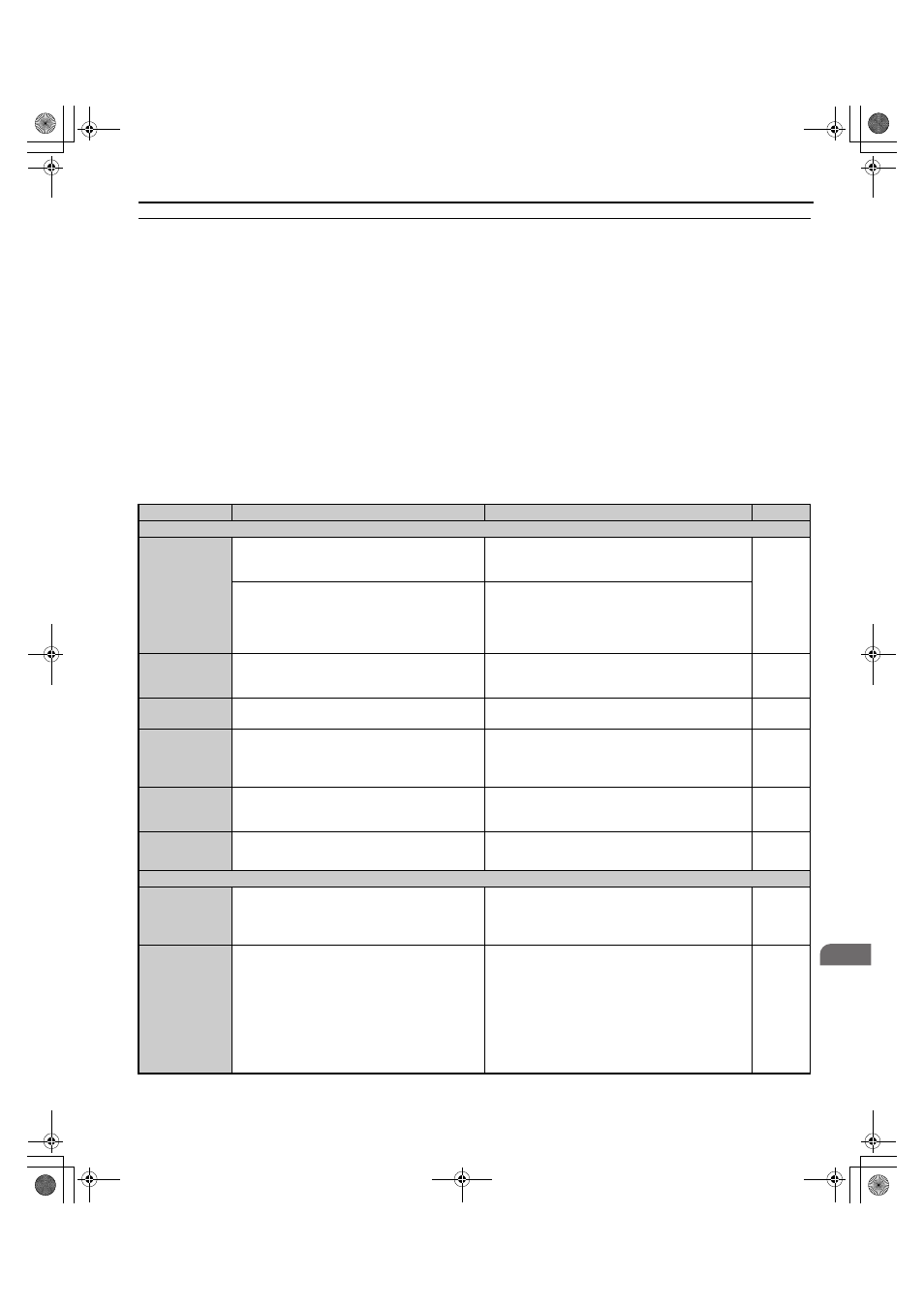Recommended periodic inspection, Periodic inspection – Yaskawa R1000 Series Power Regenerative Unit User Manual
Page 117

6.2 Inspection
YASKAWA ELECTRIC TOEP C710656 08B YASKAWA Power Regenerative Unit - R1000 Instruction Manual
117
Per
iodic Ins
pec
tion
&
Maint
ena
nc
e
6
◆ Recommended Periodic Inspection
outlines the recommended periodic inspections for Yaskawa regenerative unit installations. Although periodic
inspections should generally be performed once a year, the regenerative unit may require more frequent inspection in
harsh environments or with rigorous use. Operating and environmental conditions, along with experience in each
application, will determine the actual inspection frequency for each installation. Periodic inspection will help to avoid
premature deterioration in performance or product failure. Copy this checklist and mark the “Checked” column after each
inspection.
■
Periodic Inspection
DANGER! Electrical Shock Hazard. Do not inspect, connect, or disconnect any wiring while the power is on. Failure to comply can
result in serious personal injury. Before servicing, disconnect all power to the equipment. The internal capacitor remains charged even
after the power supply is turned off. The charge indicator LED will extinguish when the DC bus voltage is below 50 Vdc. To prevent
electric shock, wait for at least the time specified on the warning label; after all indicators are OFF, measure for unsafe voltages to
confirm the regenerative unit is safe prior to servicing.
NOTICE: Check the operation of the cooling fan only during inspections.
Table 6.2 Periodic Inspection Checklist
Inspection Area
Inspection Points
Corrective Action
Checked
Main Circuit Periodic Inspection
General
• Inspect equipment for discoloration from
overheating or deterioration.
• Inspect for damaged or deformed parts.
• Replace damaged components as required.
• The regenerative unit has few serviceable parts and
may require complete regenerative unit replacement.
Inspect for dirt, foreign particles, or dust collection on
components.
• Inspect enclosure door seal if used.
• Use a vacuum cleaner to remove dust and dirt, but do
not allow it to come into contact with product
components.
• Replace components if cleaning is not possible.
Conductors
and Wiring
• Inspect wiring and connections for discoloration,
damage, or heat stress.
• Inspect wire insulation and shielding for wear.
Repair or replace damaged wiring.
Terminals
Inspect terminals for stripped, damaged, or loose
connections.
Tighten loose screws and replace damaged screws or
terminals.
Relays and
Contactors
• Inspect contactors and relays for excessive noise
during operation.
• Inspect coils for signs of overheating such as melted
or cracked insulation.
• Check coil voltage for overvoltage or undervoltage
conditions.
• Replace damaged removable relays, contactors, or
circuit board.
Electrolytic
Capacitor
• Inspect for leaking, discoloration, or cracks.
• Check if the cap has come off, for any swelling, or if
the sides have burst open.
The regenerative unit has few serviceable parts and may
require complete regenerative unit replacement.
Diode, IGBT
(Power
Transistor)
Inspect for dust or other foreign material collected on
the surface.
Use a vacuum cleaner to remove dust and dirt, but do not
allow it to come into contact with product components.
Control Circuit Periodic Inspection
General
• Inspect terminals for stripped, damaged, or loose
connections.
• Make sure all terminals have been properly
tightened.
• Tighten loose screws and replace damaged screws or
terminals.
• If terminals are integral to a circuit board, then board or
regenerative unit replacement may be required.
Circuit Boards
Check for any odor, discoloration, and rust. Make sure
connections are properly fastened and that no dust or
oil mist has accumulated on the surface of the board.
• Fix any loose connections.
• If an antistatic cloth or vacuum plunger cannot be used,
replace the board.
• Use a vacuum cleaner to remove dust and dirt, but do
not allow it to come into contact with product
components.
• Do not use any solvents to clean the board.
• The regenerative unit has few serviceable parts and
may require complete regenerative unit replacement.
TOEP_C710656_08B_1_0.book 117 ページ 2015年2月5日 木曜日 午前10時7分